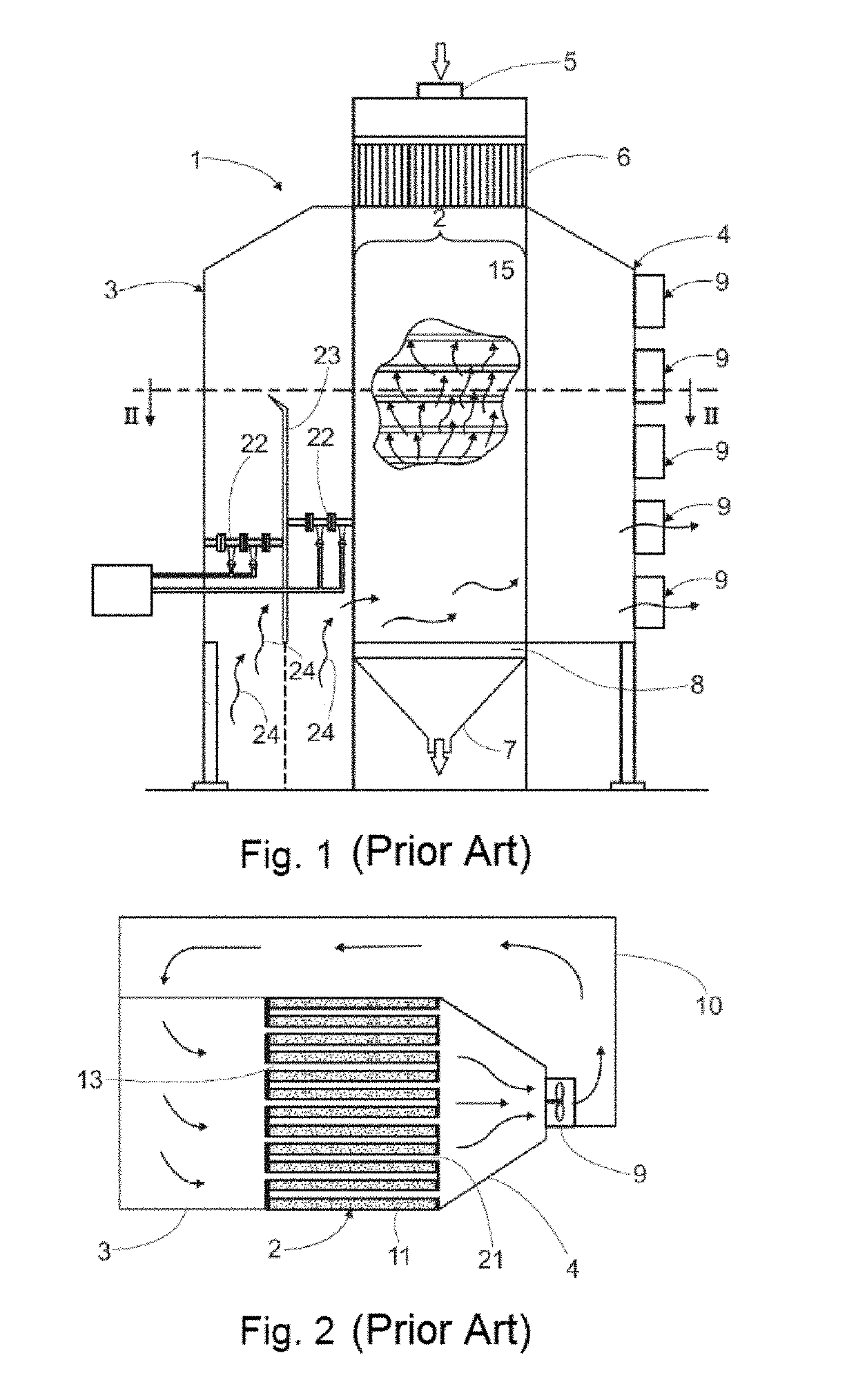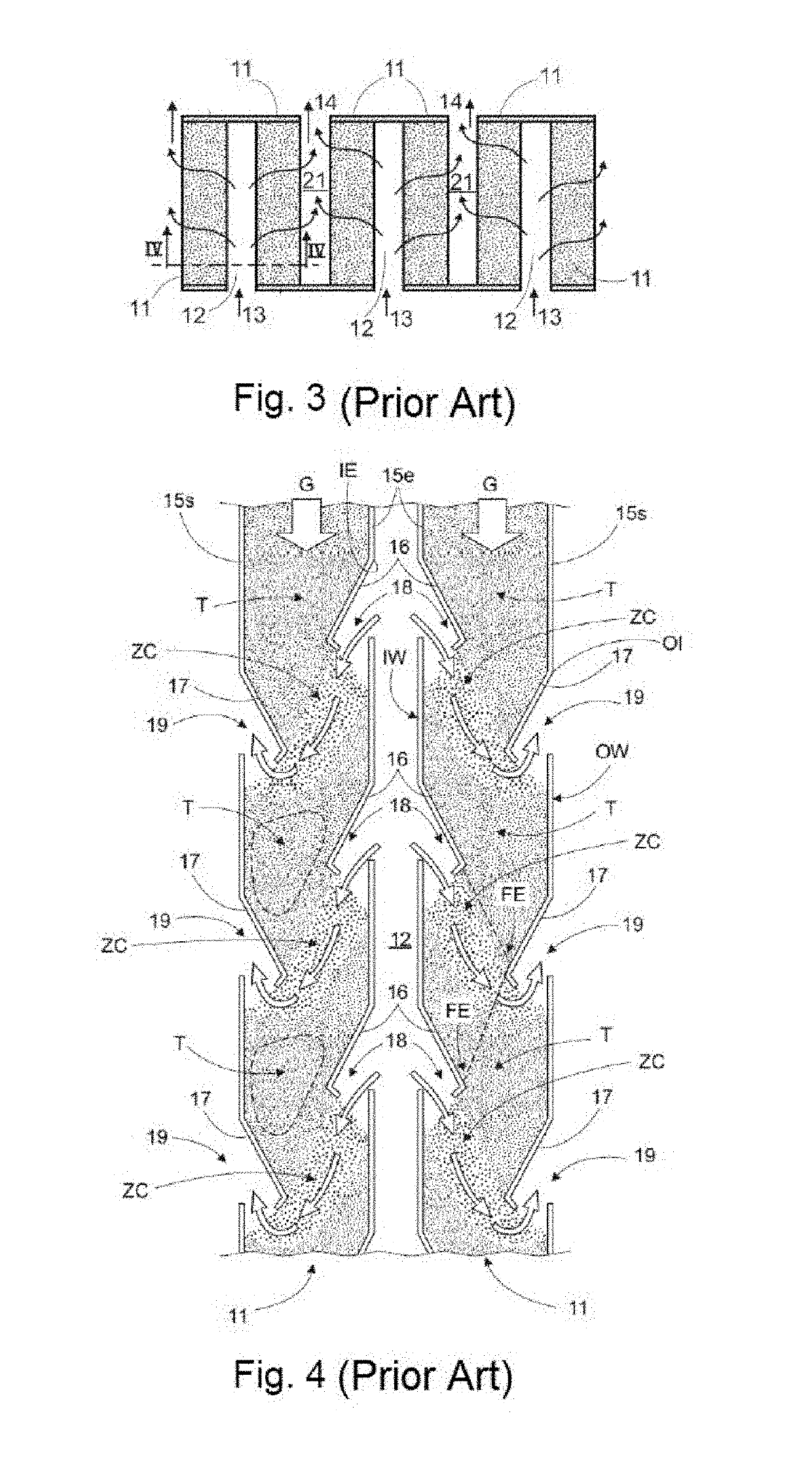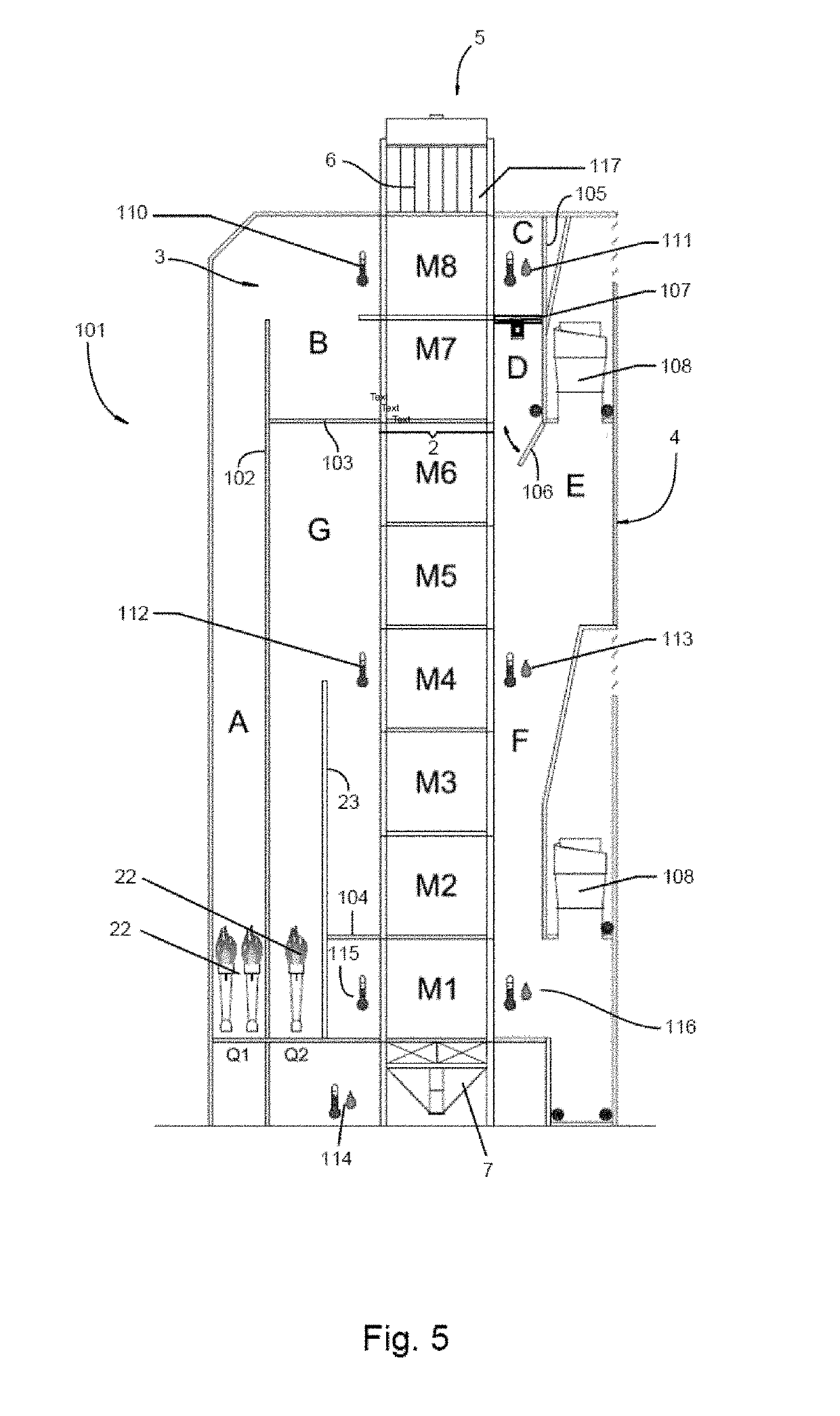Grain dryer
a technology for drying grains and dryers, applied in the field of grain drying machines, can solve the problems of high grain cracking rate, poor quality of drying, and high need for air backpressure in these dryers
- Summary
- Abstract
- Description
- Claims
- Application Information
AI Technical Summary
Benefits of technology
Problems solved by technology
Method used
Image
Examples
Embodiment Construction
[0031]Referring now to the figures, it is seen that the invention consists in a new grain dryer that allows carrying out the drying process under ideal conditions of temperature-humidity, thus obtaining a better grain quality, and achieving a significant reduction in the energy consumption.
[0032]First and for merely exemplary purposes to provide a better understanding of the object of the present invention, reference will be made to the grain dryer of the Argentine Patent Application No. P20040104617 of INGENIERIA MEGA S.A. According to FIGS. 1 to 4 related to the prior art, it can be seen that INGENIERIA MEGA S.A.'s dryer comprises a vertical main structure 1, composed of a central body 2, through which the grain to be dried passes, a front chamber 3 for entering hot air and a rear chamber 4 for the exit of the air used. The main body 2 has in its upper part an inlet 5 from which wet grains are loaded, below which there is a loading hopper 6 that communicates with the central body ...
PUM
 Login to View More
Login to View More Abstract
Description
Claims
Application Information
 Login to View More
Login to View More - R&D
- Intellectual Property
- Life Sciences
- Materials
- Tech Scout
- Unparalleled Data Quality
- Higher Quality Content
- 60% Fewer Hallucinations
Browse by: Latest US Patents, China's latest patents, Technical Efficacy Thesaurus, Application Domain, Technology Topic, Popular Technical Reports.
© 2025 PatSnap. All rights reserved.Legal|Privacy policy|Modern Slavery Act Transparency Statement|Sitemap|About US| Contact US: help@patsnap.com



